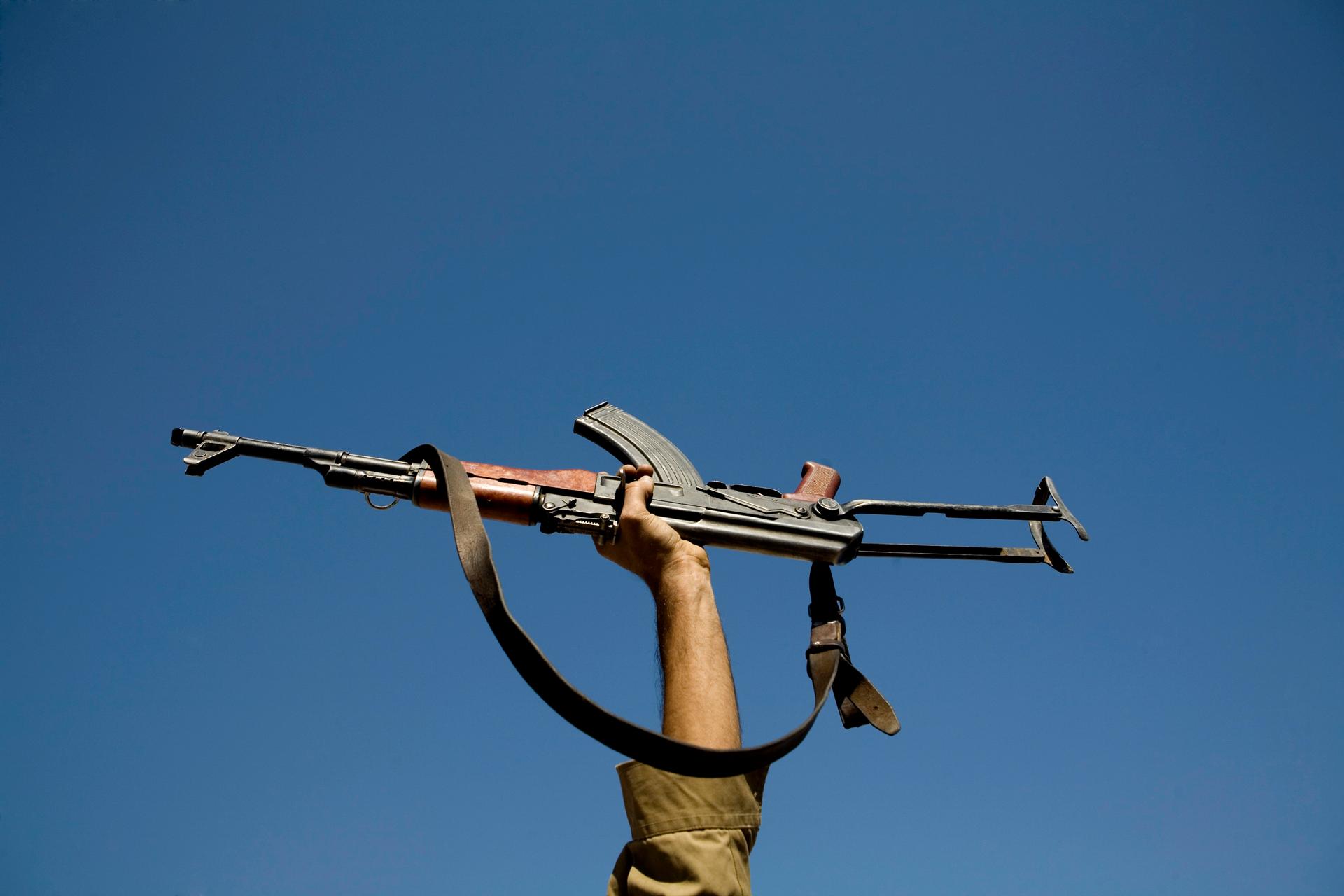Mikhail Kalashnikov, has died at 94, with ‘no regrets’
My experience of the AK-47 was at the receiving end.
I was a reporter in Afghanistan during the last war back in 1991, when our driver decided to ignore a young shepherd boy who was flagging us down, presumably for 'baksheesh' (a bribe). The kid unslung his AK-47 and fired a single shot at the truck. Luckily no-one was hurt.
We stopped, and had a tense argument. But we didn't pay. The scene is a tiny one in a canvas that embraces 100 million AKs in conflicts all around the world. And it illustrates the biggest issue with the weapon. Even an uneducated 12-year-old in the mountains of Afghanistan can operate and maintain an AK-47.
Moreover, he can probably afford it. They were about $10 or $15 back then, even in remote parts of Afghanistan. It's an extremely rugged and reliable weapon. You can bury it in mud or sand for years, and the chances are, when you dig it up, it will still work as well as the day it left the factory. In fact, you don't even need a factory. Metal shops along the Afghan-Pakistan frontier have been making their own since at least the 1970s. It doesn't have many moving parts; it doesn't need much cleaning, and it needs hardly any oil.
The AK-47 has its drawbacks. It's not very accurate beyond 100 yards – the Afghan style of fighting was nicknamed 'spray and pray.' And it doesn't have a great deal of what's called 'stopping power.' But its cheapness, light weight, and reliability make it extremely attractive to low-tech or guerrilla armies. Americans found themselves at a disadvantage when they encountered the weapon for the first time in the jungles of Vietnam. The short-range of the AK was ideally-suited to the close-quarter fighting common in the forest. The over-engineered M-16 was much less rugged and reliable.
The problem of the ubiquity of the AK-47 accelerated in the 1970s when the Soviet Union licensed dozens of countries to make their own copies and variants. The UN estimates there are now 100 million in circulation, out of about 500 million firearms across the world.
Mikhail Kalashnikov was the man behind the AK-47. He passed away Monday in Russia, his homeland, after a short illness, at the age of 94. Kalashnikov was well aware of how his weapon was used around the world. It was something reporters and writers were always asking him about. But his standard answer was to say it was not his fault. He blamed the politicians, and said he "slept well." Sometimes he would add that he would have preferred to use his engineering skills to make agricultural equipment, or even a decent lawn-mower. But he would say "you can blame the Nazis" for his decision to begin making weapons.
Kalashnikov was a young soldier in World War II, fighting against the Nazi invasion of the Soviet Union. He was badly wounded in the battle of Bryansk in October 1941. He was dismayed by the German superiority in firepower, and legend has it that it was while he was lying in a hospital bed that he turned his mind to how to improve the standard infantry fighting weapon. It took him several years before the design was approved in 1947. The term AK-47 is an abbreviation of Automatic Kalashnikov – 1947.
The young engineer was a patriot and believed in his country's ideals of socialism. So he did not patent the design. "It was for the defense of the Motherland," he would say. So he never became wealthy, and lived out his life in relatively modest circumstances in an industrial town east of Moscow, where he headed up an arms factory. The Soviet state looked after him, as did its successor, Russia. He was heaped with honors. But he was never rich.
He had no regrets about his career designing weapons. It's believed the AK-47 and its variants have killed more people than any other single weapon.
